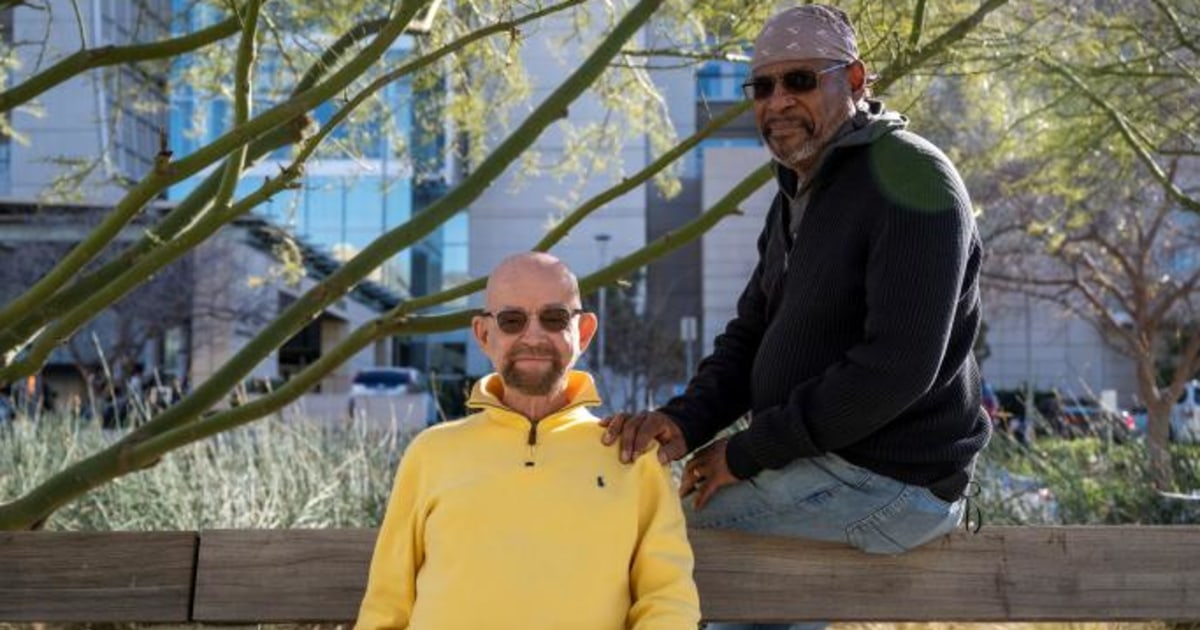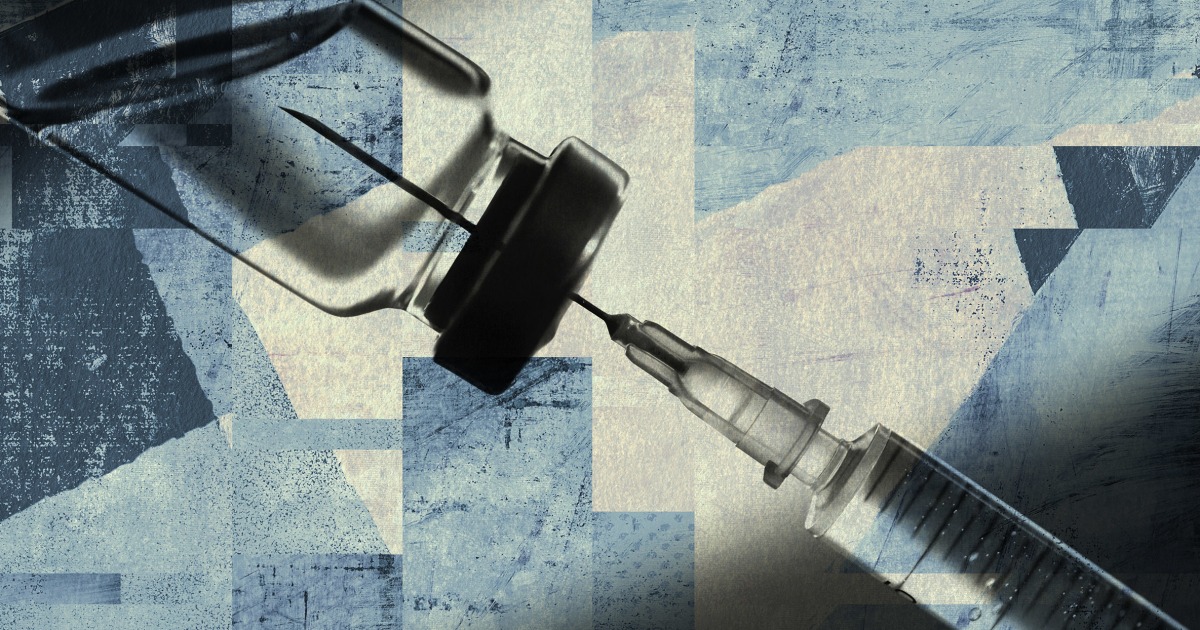There are already three people in the world who have defeated the HIV virus.
After
the Berlin patient
, Timothy Ray Brown, and
the London patient
, Adam Castillejo, the journal
Nature
has just published the third case, similar to the previous ones, of HIV remission after a stem cell transplant.
It's about the call
Düsseldorf patient, a 53-year-old man whose identity has not been released: after suffering leukemia, he underwent a bone marrow transplant —where stem cells are found— from a donor with a mutation that prevents the virus from penetrating cells , and it has been four years without antiretroviral treatment or trace of the virus.
Javier Martínez-Picado, a researcher at IrsiCaixa and co-leader of the international consortium IciStem, which has published the finding, is always cautious but forceful: “It is no longer an anecdote.
They are three.
In medicine there is nothing categorical and surprises can always happen, but here we can talk about a case of cure”.
HIV infection is currently incurable.
It can be controlled and kept at bay with antiretroviral treatments, but if the medication is stopped, the virus replicates again in the body.
Except in very exceptional cases, it always returns.
HIV has, in the words of Martínez-Picado, "three curses": "It destroys the immune system, integrates into our cells and mutates very quickly," he laments.
All of this makes its elimination enormously difficult because it either strikes down the immune cells that have the function of protecting us from external pathogens, or it hides in them, in a kind of latency state in the so-called viral reservoirs, which prevent it from being destroyed.
Its great variability also complicates the search for an effective vaccine for all circulating variants.
More information
The 'London patient': "I won the lottery: I have been cured of two incurable diseases"
For this reason, achieving the cure of certain patients represents a great scientific milestone in the fight against HIV and opens a window of opportunity towards new research strategies to strike down the virus.
"This article has three virtues: it has cured a person, it allows us to maintain confidence and the illusion that we can cure patients with HIV, and it allows us to set the bases to make this scalable," reflects Martínez-Picado, who coordinates the IciStem consortium from IrsiCaixa next to the University Medical Center of Utrecht (Netherlands).
The Berlin patient gave birth for the first time, in 2011, to a real cure against HIV.
Diagnosed with infection by the virus in 1995, Brown suffered leukemia 12 years later and underwent a peculiar stem cell transplant: apart from being a match, the donor had a mutation in the CCR5 gene, necessary for the virus to penetrate the cells. cells.
To everyone's surprise, the patient was cured of the blood disease and HIV infection because the virus disappeared from his body.
Brown passed away in 2020, but not from HIV, but from leukemia.
What was presumed to be an anecdote, an isolated case, was replicated with the London patient: in 2019 it was published in the journal
Nature
that a man with HIV since 2003 was diagnosed with Hodgkin's lymphoma a decade later and in 2016 underwent to a marrow transplant from a compatible donor and also with the CCR5Δ32 mutation, which prevents the virus from entering cells.
Castillejo has been five years without antiretroviral treatment and free of the virus.
The case of the new
düsseldorf patient
It is very similar to his predecessors: he was diagnosed with an HIV infection in 2008 and started antiretroviral therapy;
in 2012, however, he suffered from acute myeloid leukemia and had to undergo a bone marrow transplant, so they looked for a compatible stem cell donor who also had the CCR5Δ32 mutation.
About six years after the transplant, when he had stabilized hematological disease, antiretroviral treatment was withdrawn and since then (four years) there has been no trace of the virus.
A key mutation
In all three cases there is a confluence of HIV infection and blood cancer.
Due to the hematological disease, and after exhausting all the therapeutic tools, the doctors choose to perform a bone marrow transplant from a compatible donor.
To kill two birds with one stone, in addition to being compatible, the donor has this strange mutation, present in just 1% of the European population, which prevents the virus from entering cells.
“There is a protein, CCR5, that is usually expressed in the cells of the body, but in people who have the mutation it is not expressed.
The virus, to enter cells, needs to open two doors, the CD4 molecule and the CCR5.
If CCR5 is not expressed, the virus cannot open that door and enter the cells”, explains Martínez-Picado.
With the transplant itself, in addition, the entire immune system of the recipient is wiped out, completely regenerating it with the donor's cells.
“That makes the patient's viral reservoir disappear.
It's not that it's not there, it's that we don't see it”, the IrsiCaixa researcher qualifies.
There is also a phenomenon that occurs in this type of transplant and that could favor the success of HIV elimination: the graft-versus-host syndrome, explains Martínez-Picado.
“With previous chemotherapy to eliminate diseased lymphocytes, almost everything is killed, although some cells are difficult to eliminate.
But when the transplant is done, the donor's cells destroy the recipient's remaining blood cells”, so that any still hidden cells infected by the virus are struck down.
“Whenever there is this reaction, we see a good prognosis.
By adding the mutation to the equation of this transplant, when the immune system is regenerated, the cells are refractory to the virus.
Patients, in fact, could be reinfected, but the chances are very low.
“It is practically impossible for them to get infected by a virus that uses CCR5 [as a gateway].
There is a portion of the virus that, sometimes, instead of pushing that door, uses another, CXCR4, and it is possible that they can be reinfected by viruses that use this door”, points out Martínez-Picado.
But the odds are low.
In the case of the Düsseldorf patient, researchers have been able to study the presence of the virus in blood, in lymph nodes and in the intestine, with increasingly sensitive techniques.
And they found some traces of HIV, but in very small amounts and which they consider to have no replication capacity, agrees Martínez-Picado: “We can continue to detect the presence of the virus in some nodes, but I think they cannot replicate.
Because we know, from thousands of interruptions of antiviral treatment, that the virus returns a few days after stopping it and we have been here for four years without the virus reappearing in the blood ”.
Another indirect proof that there is no competent virus nearby is that specific antibodies and specific immune cells to fight against HIV, which are usually activated when the virus is circulating, have not been detected.
The scientists, however, add in the study that "the presence of residual replication-competent viruses could not be completely ruled out."
Prudence is never superfluous, explains Martínez-Picado: “You have to be careful in the scientific field and outside because this article is also read by people with HIV.
We don't want to send big messages.
In addition, we cannot make a transplant scalable to all patients with HIV because it has a very high risk”.
Transplantation is not for everyone
Not everyone with HIV can have a bone marrow transplant.
This procedure is only indicated for hematological tumors when other therapeutic alternatives fail.
The technique is very risky and it is unethical to subject patients to these aggressive treatments to get rid of the virus when there are effective and less dangerous antiretrovirals that keep HIV at bay.
But the fact that this method cannot be applied directly does not mean that the strategy is not scalable.
Martínez-Picado points out that gene therapy is being investigated to modify the cells of people with HIV: it would be a matter of manipulating a specific population of cells from the person (not from a donor) in the laboratory and re-infusing them into the patient to that it had enough cells with that mutation to make it impossible for the virus to replicate.
The investigation continues its course and the scientific community continues to add cases to the list of patients in remission.
With an approach similar to that of these three cases described, another of a patient in New York and a fifth of another person from the City of Hope Hospital in Duarte (California) are about to be published.
Beatriz Mothe, researcher at the Fundación Lucha contra las Infecciones and member of the AIDS Study Group (Gesida) of the Spanish Society of Infectious Diseases, highlights the relevance of the study of the Düsseldorf
patient
is that "the viral reservoirs are very well characterized and how the immune response is lost" as the virus disappears.
Mothe, who did not participate in the study, admits that the transplant technique cannot be transferred to clinical practice, but he is committed to developing strategies that simulate the effect of the intervention.
“There are gene therapy strategies that are trying, but the challenge and the difficulty is reaching all the cells of the body, ensuring that 100% of the cells convert” with that mutation so that the virus cannot penetrate them.
José Alcamí, director of the AIDS Immunopathology Unit of the Carlos III Health Institute, celebrates the "merit" of the study of the Düsseldorf patient, although he stresses that it will not have implications in daily practice: "Like all cases of eradication or cure that we publish, are exceptional cases that cannot be extended to practically all patients.
It is unethical to perform a bone marrow transplant if it is not indicated by a hematological disease because the mortality of the procedure is very high (more than 40%)", warns the specialist, who has not participated in the research, in statements to Science
Media Center.
And having gene therapy to eliminate the CCR5 gene in the cells of patients with HIV, as the authors suggest, is, in Alcamí's opinion, still "a distant goal".
Along these lines, Pere Domingo, head of Infectious Diseases at Hospital Sant Pau in Barcelona, who has not intervened in the research either, insists that, although the study "has value and follows in the wake of the other two patients" and, Indeed, "it is very spectacular, attractive and inspiring", gene therapy is very complex and "hardly applicable to the majority of patients".
elite drivers
Apart from the case of these three patients cured after the transplant, the scientific community is also closely following two other profiles of patients who have managed to control the virus on their own, without medical intervention.
They are, for example, the so-called elite controllers, a handful of people in the world who became infected but, due to their particular immunological characteristics, have come to control the infection on their own, without the need for antiretroviral treatment or any clinical mediation.
There is also another group, known as post-treatment controllers, who, after a period on antiviral treatment, stopped their medication and the virus did not reappear.
Martínez-Picado explains the differences: “They are different things, but everything helps us to understand antiviral persistence: the transplant cases are people with standard disease that we cure with an intervention;
Elite controllers are people who have been monitored for more than 20 years, without treatment or virus, but to whom we have not done anything to control HIV;
Post-treatment controllers are people who have had the virus in their blood for a while, have received treatment for a while, and after stopping it, the virus does not reappear.”
All of them, in any case, continue to be carefully studied.
And the confirmation of the Düsseldorf patient serves as a shock to fuel the search for a cure against HIV.
The man, who maintains anonymity, has celebrated his story through a statement released by the University Medical Center of Utrecht: "I was diagnosed with HIV in 2008. I still remember my doctor's phrase very well: 'Don't take it so to chest.
Let's experience together that HIV can be cured!'
At the time, I dismissed the claim as an alibi.
Today, I am even more proud of my global team of doctors who managed to cure me of HIV and, at the same time, of course, leukemia.
On Valentine's Day this year, I celebrated the 10th anniversary of my bone marrow transplant in a big way: my donor was present as the guest of honor.”
You can follow
EL PAÍS Salud y Bienestar
on
,
and
.

/cloudfront-eu-central-1.images.arcpublishing.com/prisa/DX4HKKAH35HUJHEV6JMZCTZ76U.jpg)











